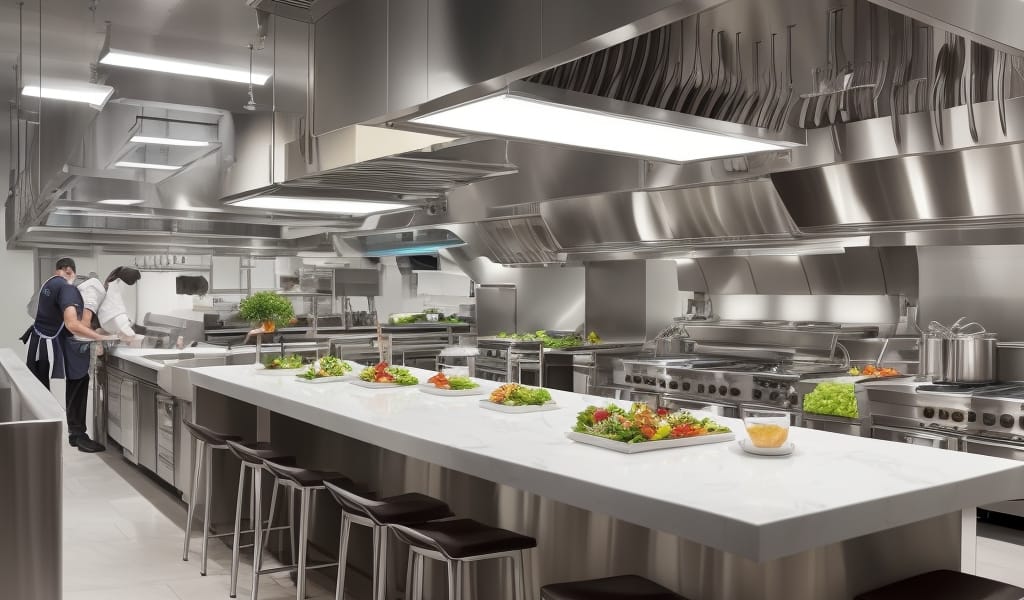Key Takeaways:
- Implement a system for tracking and measuring food waste to identify areas for improvement.
- Regularly review and adjust menu offerings based on food waste data to minimize unnecessary purchases.
- Train staff on proper food handling and storage techniques to extend the shelf life of ingredients.
- Consider incorporating ‘leftover’ ingredients into creative daily specials to reduce waste and boost profit.
- Streamline kitchen operations with efficiency in mind, minimizing idle ingredients and optimizing prep procedures.
How to Reduce Waste and Boost Profits – Starting This Week
Simple ways to cut waste and increase your bottom line
In the restaurant industry, margins are often thin, and every dollar counts. One overlooked way restaurant owners can quickly improve their financial performance is by addressing waste. Reducing food waste isn’t just a smart environmental move—it’s a crucial strategy for improving profitability. The good news? With a few straightforward changes to your kitchen management practices, you can start reducing waste and boosting profits immediately.
Why Reducing Food Waste Matters for Your Restaurant
Food waste directly impacts your bottom line. Every ingredient thrown out represents lost money and wasted resources. Moreover, reducing food waste can positively impact your restaurant’s reputation among environmentally-conscious customers.
- Lowered Costs: By optimizing ingredient usage, restaurants can significantly cut down expenses.
- Enhanced Reputation: Environmentally responsible practices attract customers who prioritize sustainability.
- Improved Efficiency: Streamlined kitchen operations reduce labor costs and enhance productivity.
Conduct a Waste Audit to Identify Problem Areas
Before you can effectively reduce food waste, you need to understand exactly where and how it’s happening. Conducting a waste audit is a powerful first step.
How to Perform a Waste Audit
- Track Your Waste: For one week, require kitchen staff to log all food items thrown away, noting quantities and reasons.
- Analyze the Data: Look for patterns—are certain ingredients frequently discarded? Are portion sizes too large?
- Identify Actionable Solutions: Based on your audit, determine where immediate improvements can be made.
Implement Inventory Management Best Practices
Effective inventory management helps prevent overordering, spoilage, and unnecessary waste. By managing your inventory carefully, you can reduce food waste and improve profitability.
Establish a First In, First Out (FIFO) System
A FIFO system ensures ingredients are used in the order they’re received, helping prevent spoilage and waste. Train your staff to shelve new stock behind older inventory, clearly labeling products with dates.
Use Inventory Management Software
Inventory management software allows you to track usage, set reorder thresholds, and monitor inventory levels in real-time. This prevents over-ordering and ensures you order only what you need.
Optimize Your Menu to Minimize Waste
Your menu plays a vital role in waste reduction. By streamlining your offerings and using versatile ingredients, you can significantly reduce kitchen waste and improve profit margins.
Focus on Cross-Utilization of Ingredients
Design your menu to use ingredients in multiple dishes. For example, chicken breasts can be featured in salads, sandwiches, pasta dishes, and mains. This approach reduces spoilage and decreases inventory complexity.
Analyze and Remove Underperforming Dishes
Regularly review your sales data to identify dishes that don’t sell well. Eliminating low-performing menu items reduces the number of ingredients needed, simplifies inventory, and reduces waste.
Adjust Portion Sizes and Offer Flexible Options
Oversized portions often result in waste and reduced profitability. By adjusting portion sizes and offering customizable options, you can minimize waste and enhance customer satisfaction.
Consider Smaller Portions and Shareable Plates
Introducing smaller portions or shareable plates allows customers to order according to their appetite, reducing plate waste. Clearly communicate portion sizes on your menu to set expectations.
Offer Flexible Side Options
Allow customers to choose sides to accompany entrées, reducing the likelihood of unwanted items being discarded. This not only decreases waste but enhances customer satisfaction by providing personalized dining experiences.
Train and Empower Your Staff
Your employees play a critical role in waste management. Proper training and clear communication empower them to make informed decisions that reduce waste.
Educate Staff on Waste Reduction Techniques
- Regularly discuss food waste reduction strategies during staff meetings.
- Provide training on proper food storage, handling, and preparation techniques.
- Encourage staff to suggest improvements and reward effective waste-reduction ideas.
Implement Standardized Recipes and Portion Controls
Standardized recipes and portion control guidelines ensure consistency and minimize waste. Train your kitchen staff to consistently follow these standards, reducing ingredient waste and improving cost control.
Case Studies: Restaurants Successfully Reducing Waste
Learning from successful examples can inspire and guide your waste-reduction efforts. Here are two restaurants that have effectively implemented waste reduction strategies:
Case Study 1: The Green Plate Café
The Green Plate Café conducted a detailed waste audit and discovered significant spoilage from unused produce. By adjusting ordering practices, implementing a FIFO system, and redesigning their menu to use ingredients more efficiently, they reduced food waste by 30% in just two months, improving profitability by nearly 12%.
Case Study 2: Bistro Bella
Bistro Bella introduced smaller portion options and encouraged sharing plates, reducing plate waste by 20%. They also trained their kitchen staff on precise portion control and standardized recipes, further cutting waste and increasing profit margins.
Monitor Progress and Continuously Improve
Reducing food waste isn’t a one-time project—it’s an ongoing effort. Regular monitoring and adjustments are essential to continued success.
Set Clear Waste Reduction Goals
Establish specific, measurable goals related to food waste reduction. Regularly track progress toward these goals and adjust strategies as needed.
Regularly Review and Adjust Your Strategies
Monitor your inventory levels, menu performance, and waste audit data regularly. Based on these insights, refine your practices and continue to implement improvements.
Conclusion
Reducing food waste isn’t just beneficial for the environment—it’s a critical strategy for improving your restaurant’s profitability. By conducting waste audits, optimizing inventory management, adjusting menus and portion sizes, empowering your staff, and continuously monitoring progress, you can significantly cut waste and enhance your bottom line. Start implementing these profit tips immediately, and you’ll quickly see the positive impact on your restaurant’s financial health.






Comments
Be the first to comment on this article.